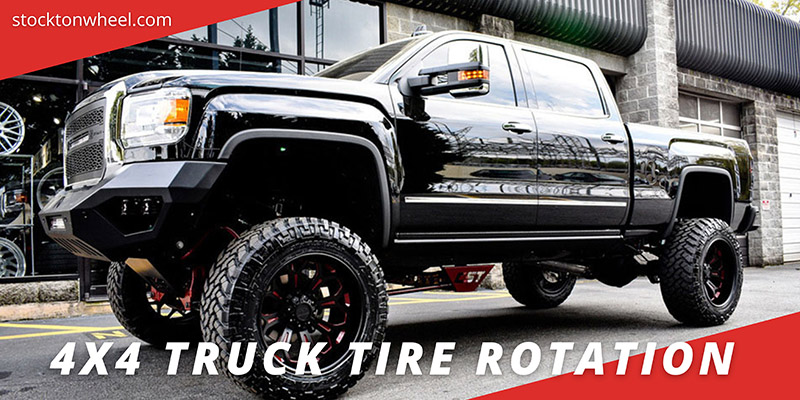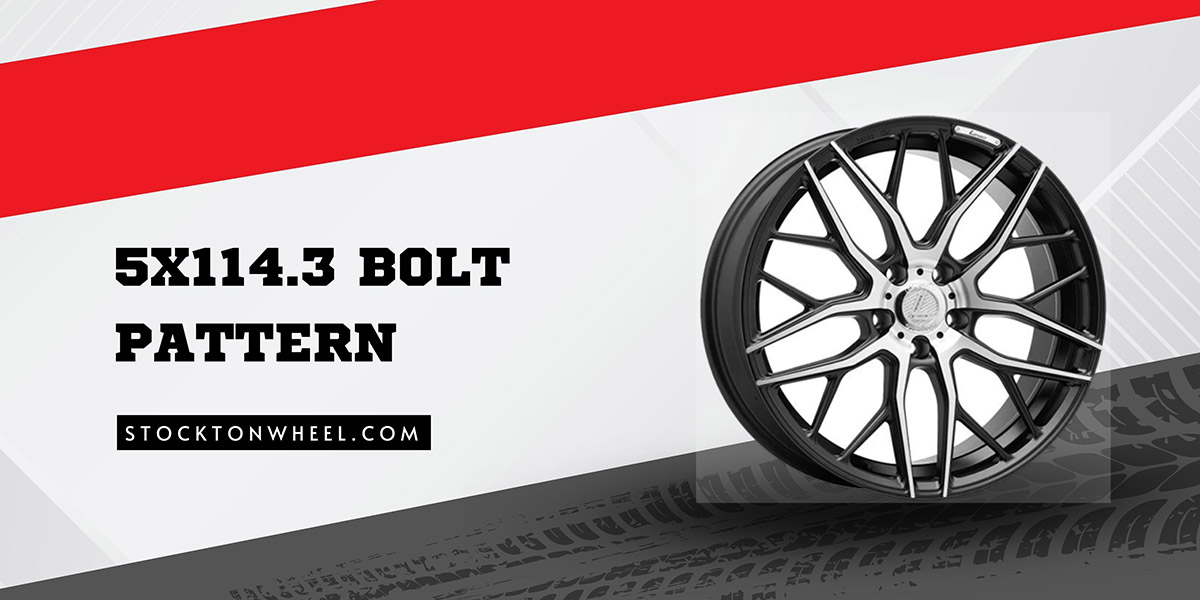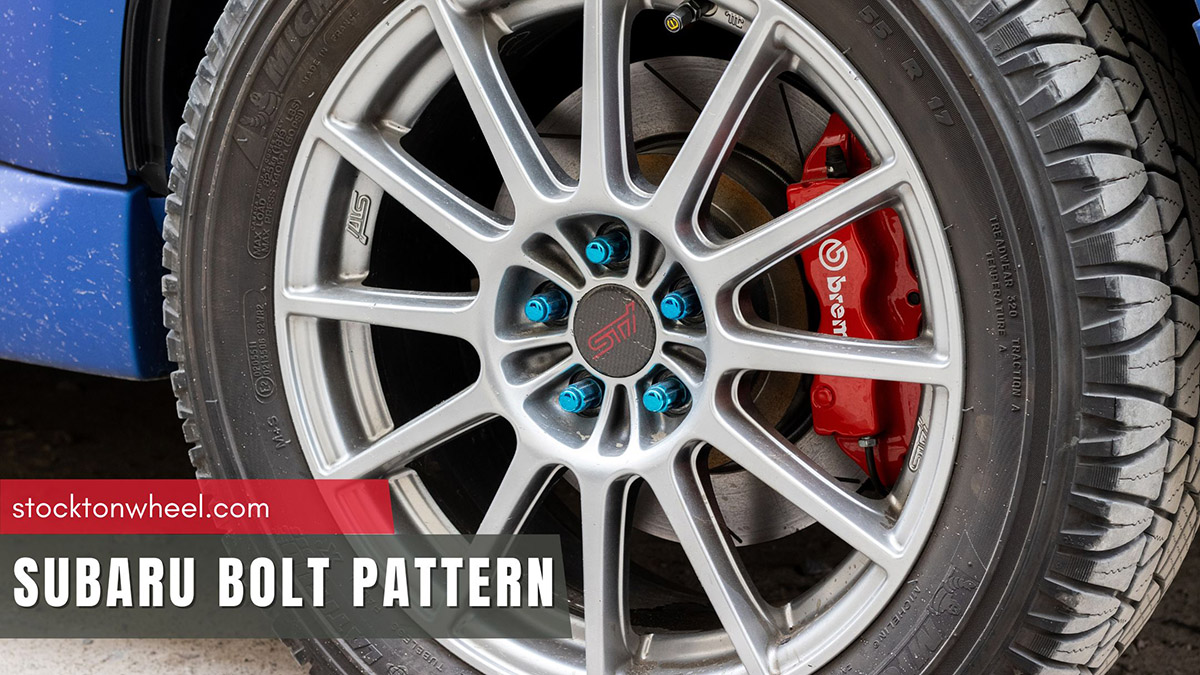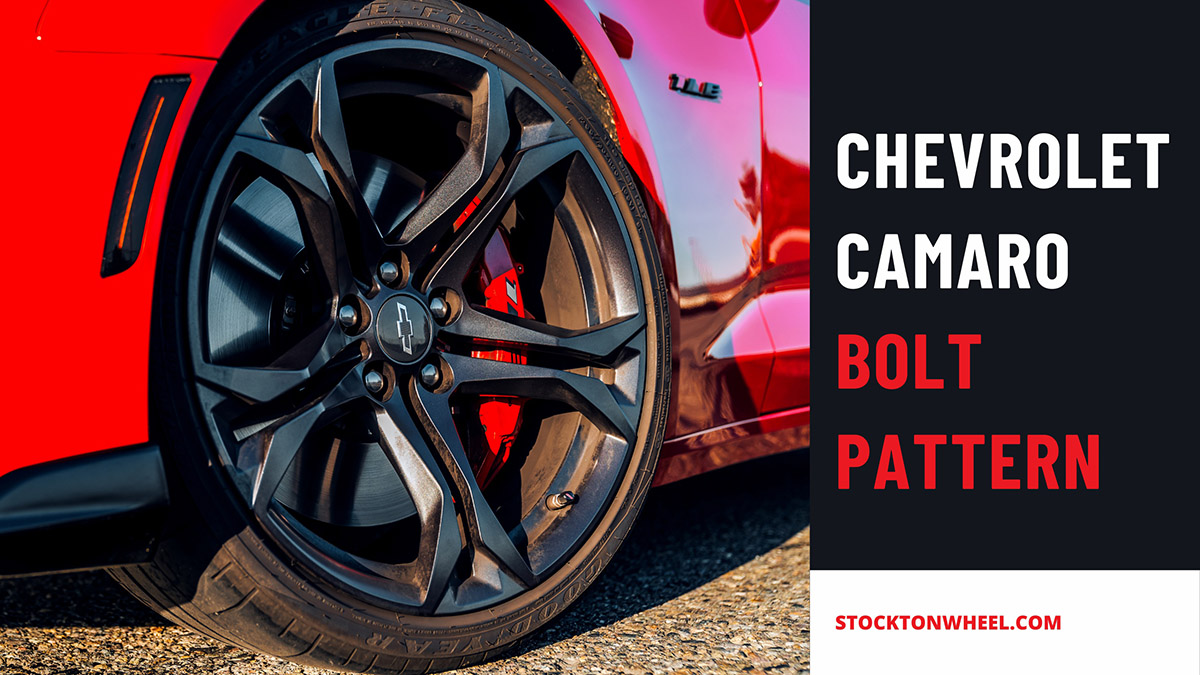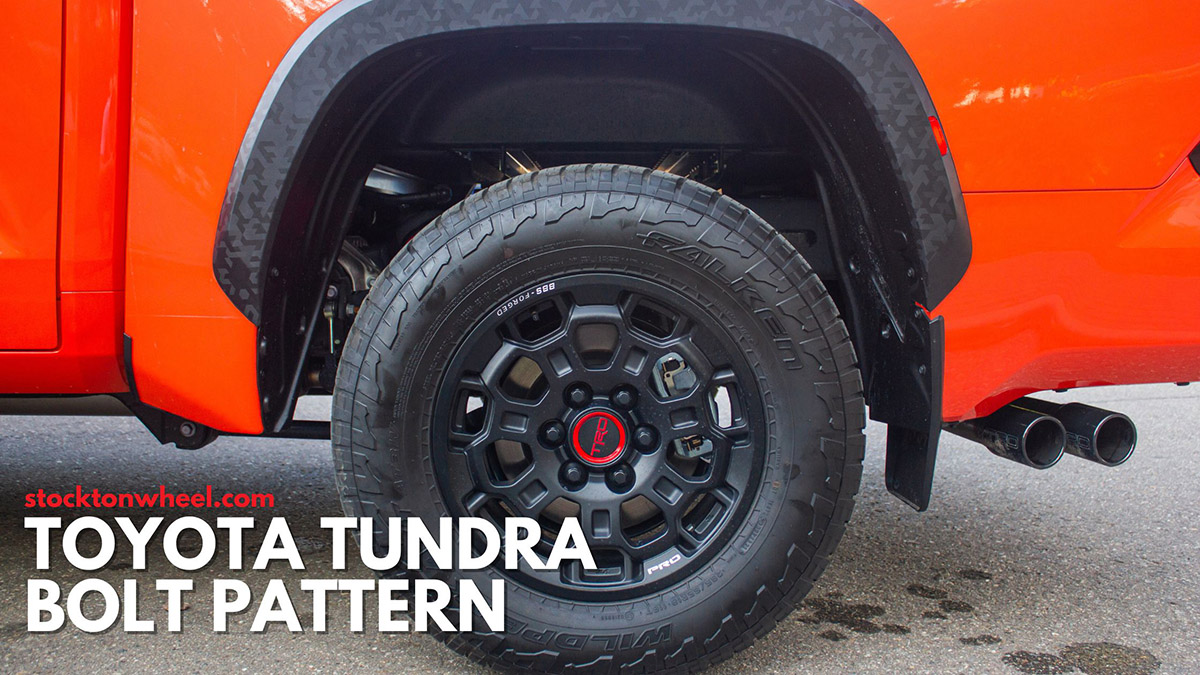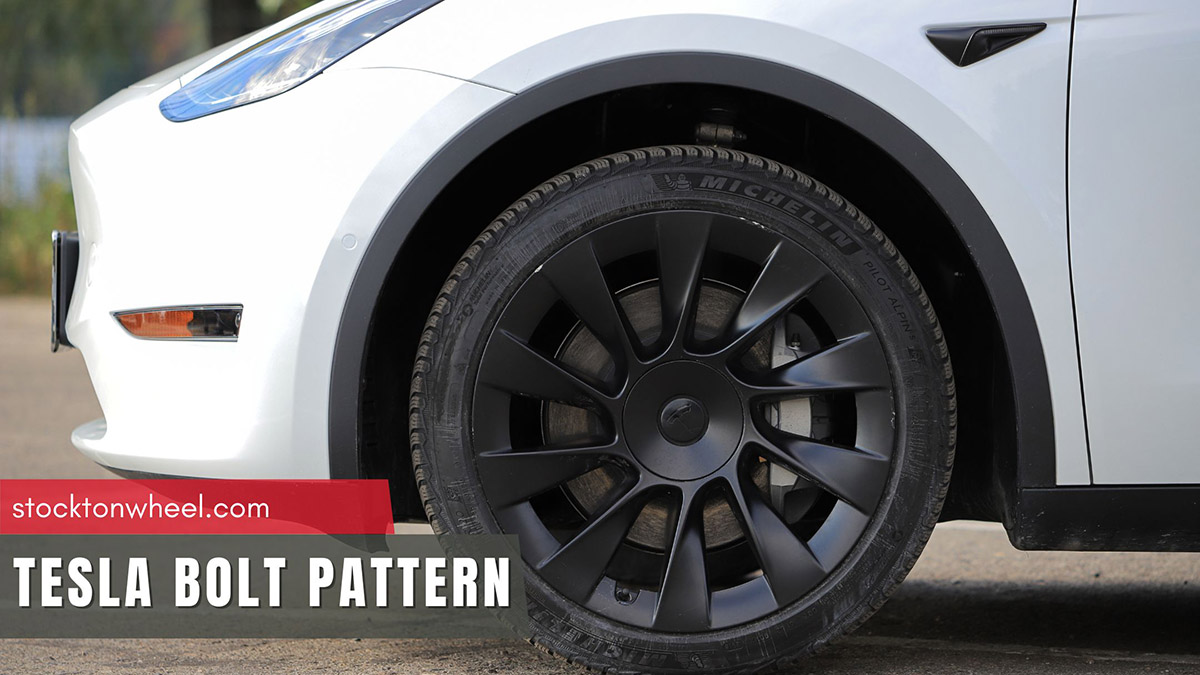Proper tire rotation is essential for maximizing the performance, longevity, and safety of your 4×4 vehicle. I have gathered various tire rotation patterns 4×4 specifically tailored for this type of car, helping you make informed decisions to ensure optimal tire wear and handling.
In this article:
4×4 Truck Tire Rotation Pattern
The 4WD tire rotation patterns for non-directional tires are rearward cross (rear to front – same side and front to rear – switch side) or X-pattern (rear and front swap and switch side). Side-to-side pattern is for staggered tires, and front-to-back is for directional ones.
Directional Tires
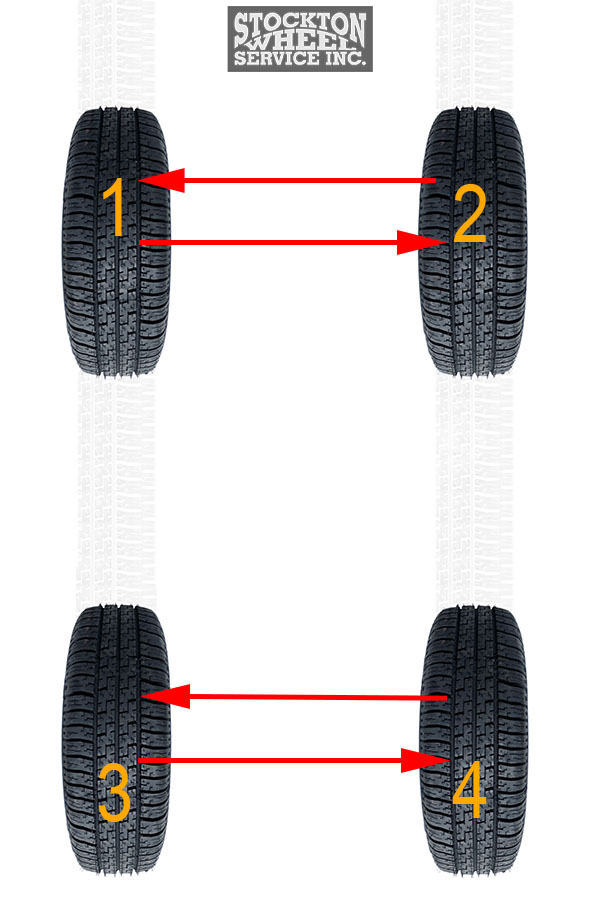
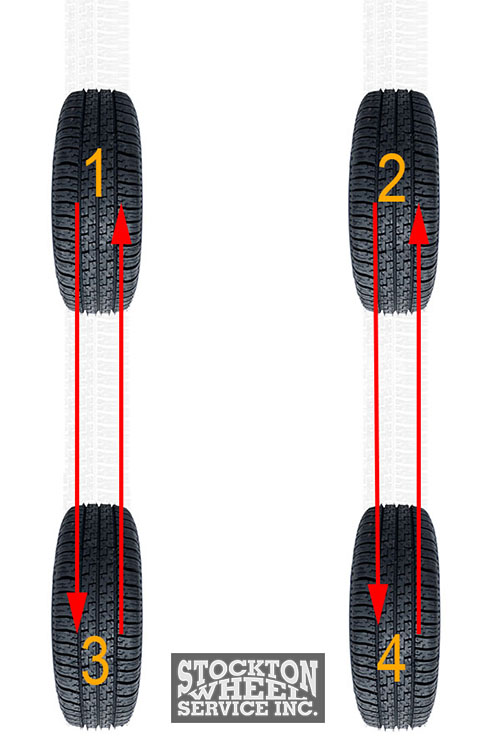
For these high-performance tires, the front-to-back pattern is the best choice. This pattern, also known as the Frontward or Forward rotation, involves moving the front tires straight back and the rear ones straight forward. It is often used for front-wheel drive and rear-wheel drive 4×4 vehicles.
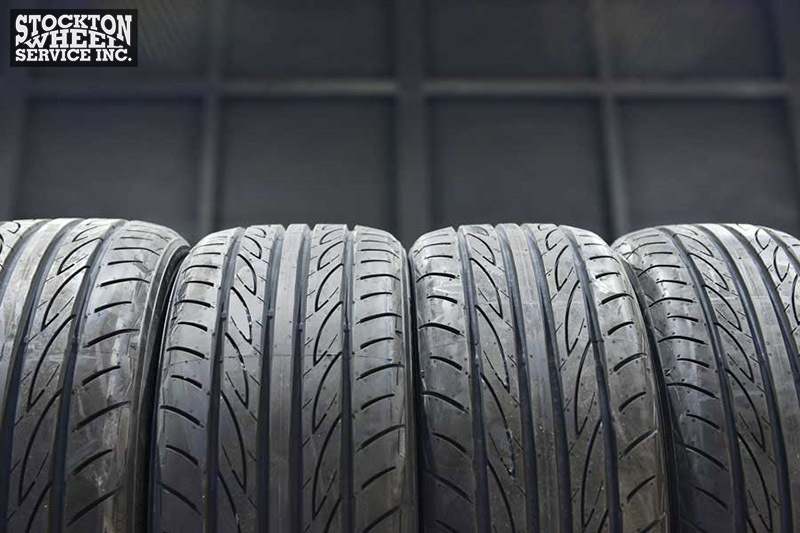
Transferring the front tires to the rear and vice versa, this rotation helps equalize wear and prolong wheel life. It is particularly effective for vehicles with unidirectional tread patterns, where the tires can only rotate in one direction.
Non-Directional Tires
You have 2 tire rotation choices for this type of tire.
Rearward Cross
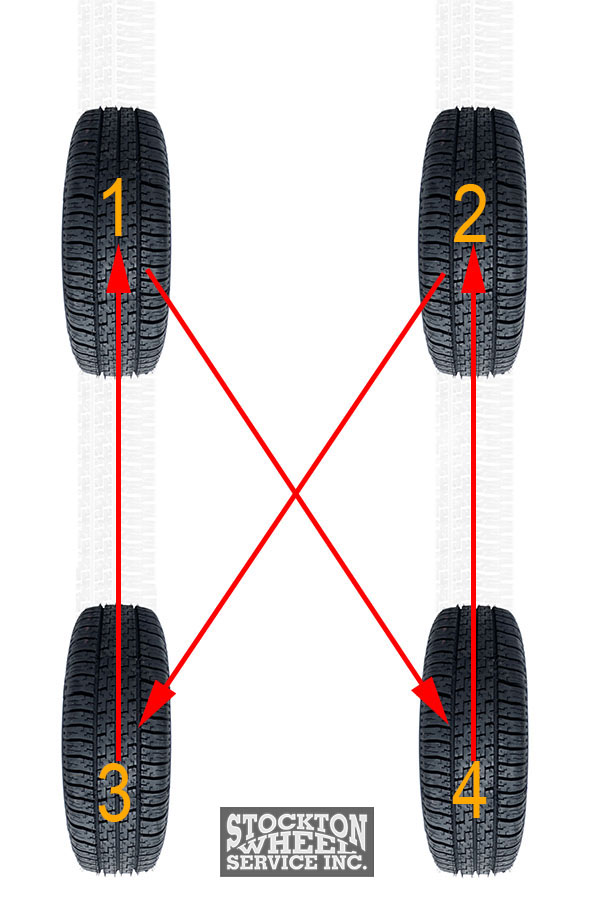
The Rearward Cross pattern is commonly used for 4×4 trucks and SUVs. It involves moving the front tires to the opposite rear positions in an X-shaped pattern. The rear tires are moved straight forward to the same front positions.
This helps distribute wear evenly and can be especially beneficial for vehicles with a heavier front axle or engine weight. It promotes balanced traction, stability, and longer tire life.
X-Pattern
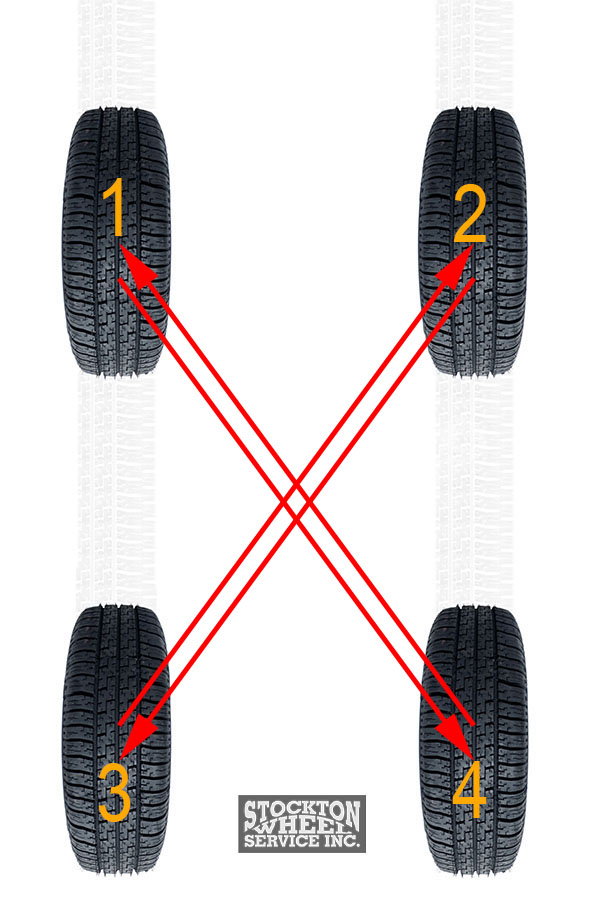
This is a variation of the Rearward Cross pattern with a tweak. Now, you move the front tires to the rear and switch their sides. Do the same with the rear tires, and you can visualize an X.
This pattern maximizes the distribution of wear across all four tires and is often recommended for high-performance 4×4 vehicles. It helps maintain consistent handling and grip, especially for vehicles that experience heavy acceleration and cornering forces.
Staggered Tires

Side-to-side is the proper tire rotation pattern for staggered tires. This involves moving the tires from one side of the vehicle to the opposite side. One front tire will be swapped directly with the other front tire, and repeat with 2 rear tires.
It is commonly used for automobiles with different-sized front and rear tires or asymmetric tread patterns.
By rotating tires from side to side, this pattern aims to even out wear between the left and right sides of the vehicle. It is particularly useful for 4×4 vehicles with a more aggressive off-road tread design.
How To Rotate Tires On A 4×4 Truck
Rotating tires is not too complicated if you know the right method. Here is the way to perform this task.
Tools Needed
- Jack
- Jack stands
- Lug wrench or impact wrench
- Wheel chocks
- Torque wrench
How To Do It
Step 1: Park your truck on a flat and level surface.
Step 2: Set the parking brake to ensure the truck doesn’t roll while you’re working on it.
Step 3: Prepare the tires for rotation. If your truck has a full-size spare tire, include it in the rotation. Otherwise, exclude the spare tire from the process.
Step 4: Loosen the lug nuts on all the tires with the lug wrench or impact wrench. Turn the nuts counterclockwise but don’t remove them just yet.
Step 5: Place wheel chocks on the opposite side of the tires you’ll be working on. This helps prevent the truck from rolling. Then, using a jack, lift one corner of the car off the ground.
Step 6: Place the jack stands under the frame or axle once the truck is lifted to provide additional support. Make sure they are securely in place before lowering the jack. Double-check that the truck is stable on the jack stands.
Step 7: Completely unscrew the lug nuts and carefully remove the tire from the truck. Place the removed tire on its side, away from your working area.
Step 8: Here I will instruct you on 2 most popular pattern:
Rearward cross pattern:

- The front driver’s side tire moves to the rear passenger side.
- The front passenger side tire moves to the rear driver’s side.
- The rear driver’s side tire moves to the front driver’s side.
- The rear passenger side tire moves to the front passenger side.
X-pattern:

- Take the tire originally on the front driver’s side and move it to the rear passenger side.
- The front passenger side tire should be moved to the rear driver’s side.
- The rear driver’s side tire should be transferred to the front passenger side.
- The rear passenger side tire should be at the front driver’s side.
Step 9: If your truck has a full-size spare tire, use this opportunity to rotate it into the regular tire rotation cycle. Place the spare tire in the appropriate position based on the rotation pattern mentioned in Step 9.
Step 10: Place the lug nuts back onto the wheel studs and tighten them by hand as much as possible. Make sure they are threaded correctly.
Step 11: Carefully raise the truck with the jack until the tires are slightly off the ground. Remove the jack stands and slowly lower the car until all the tires touch the ground.
Step 12: Tighten the lug nuts in a crisscross pattern using a lug or impact wrench. Gradually increase the torque until the lug nuts are properly tightened.
Step 13: Once the lug nuts are properly tightened, lower the truck completely to the ground and remove the jack.
Step 14: Check the tire pressure with a tire pressure gauge.
How Often Should You Rotate Tires A 4×4 Truck?
While there is no one-size-fits-all answer, a general guideline is to rotate them every 5,000 to 7,000 miles. This interval may vary depending on various factors, such as the type of tires, driving conditions, and the truck’s weight distribution.
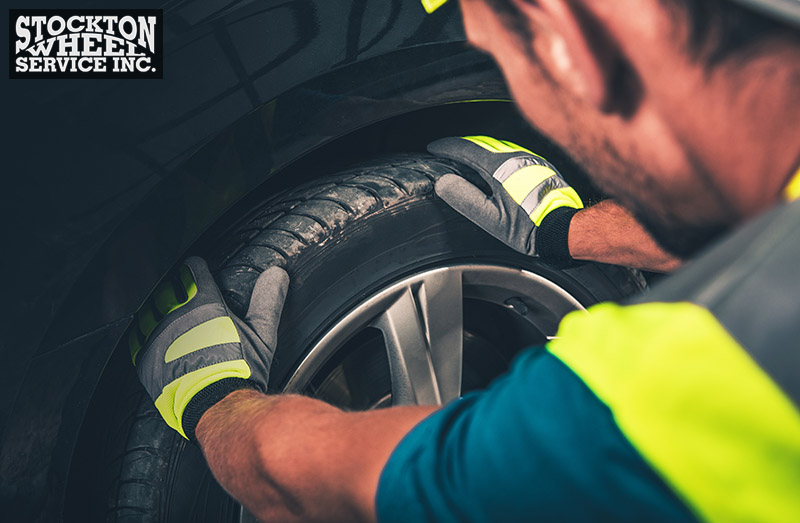
Rotating ensures even wear, extends their lifespan, and promotes optimal traction and handling.
In a 4×4 truck, the front tires tend to wear out faster due to the weight of the engine and transmission. Rotating them to the rear and vice versa helps distribute the wear more evenly. Additionally, including the spare tire in the rotation pattern ensures all tires experience uniform usage.
Frequently Asked Questions
Are 4×4 Tires Directional?
Not all, but 4×4 tires can be directional. Directional tires have a specific tread pattern designed to rotate in one direction, usually indicated by an arrow or a “rotation” label on the sidewall. These tires are optimized for water evacuation and enhanced traction.
Is It Ok To Rotate Tires Front To Back?
Yes, it is generally okay to rotate tires from front to back. In fact, this is one of the most common rotation patterns. It helps promote even tire wear and prolongs the item’s lifespan. By moving the front tires to the back and vice versa, you distribute the wear more evenly across all four tires.
Why Does Toyota Rotate Tires Front To Back?
Toyota typically rotates tires from front to back to achieve even tire wear and maintain balanced handling characteristics. It helps distribute the wear between the front and rear tires, as the front tires tend to wear more quickly due to steering and braking forces.
The Bottom Line
Implementing the right four wheel drive tire rotation pattern is key to maintaining the performance and durability of your 4×4 vehicle. You can either go for rearward cross or X-pattern – the most common styles.
Don’t overlook this crucial tire maintenance task to enjoy a smooth and safe ride on any terrain with properly rotated wheels.

